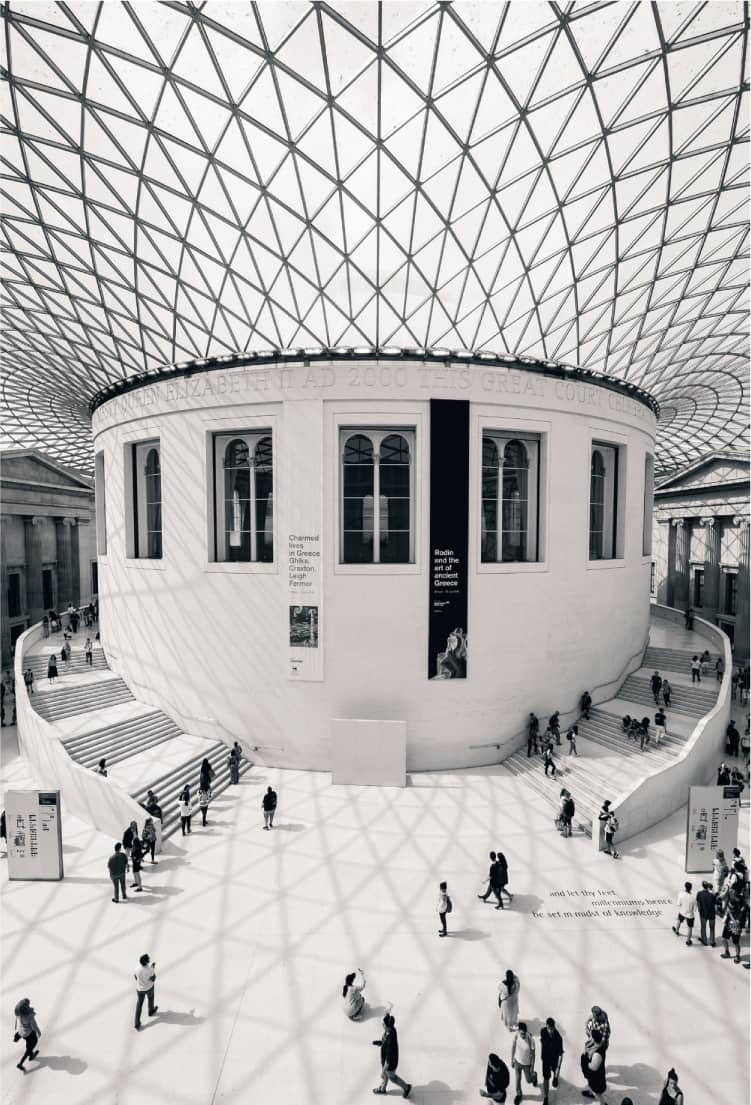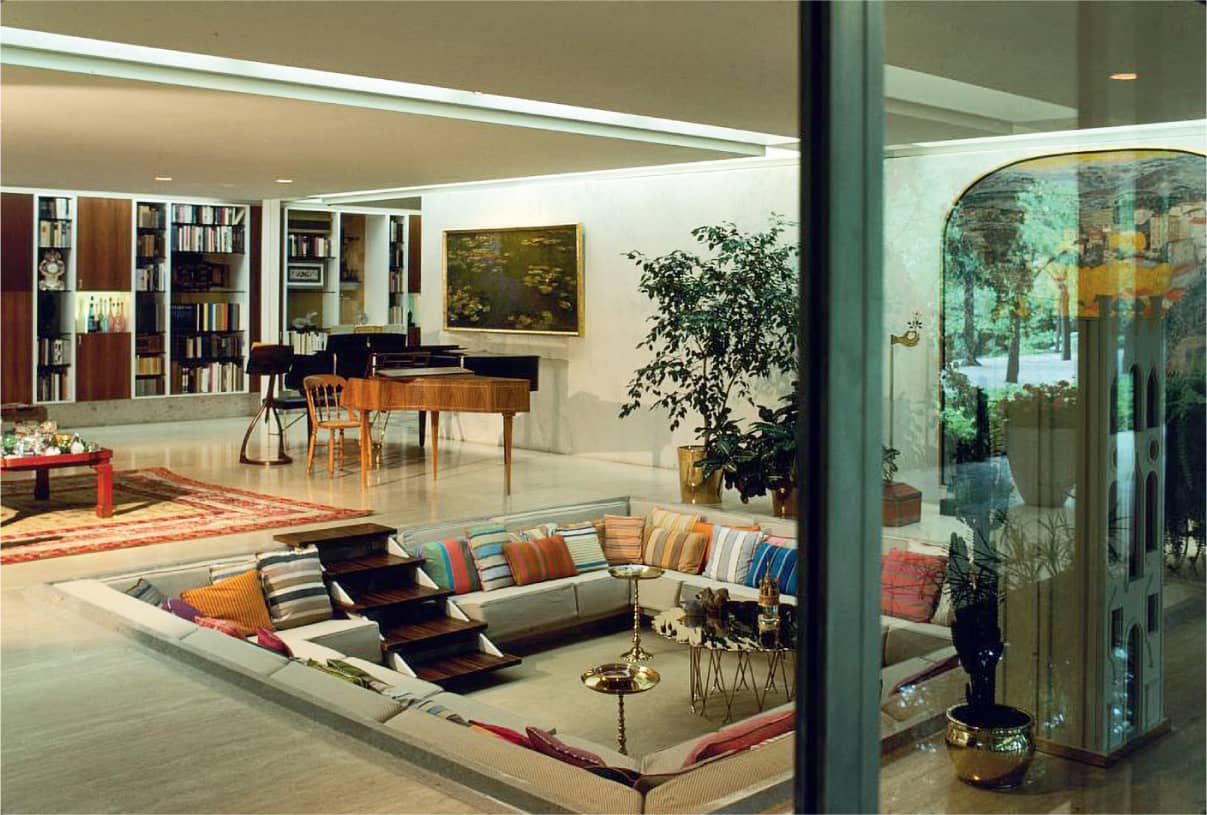90 Symmetry
The effect when elements are reflected on opposite sides of an axis or center point.
In traditional interior layouts and spaces, the use of symmetry is often the basis for the development of the placement of elements and furniture. It is also closely related to the principle of balance, which aims for an equal distribution of objects in a room or volume.
Establishing a strong axis as the dominant feature in a space—such as an element of furniture, flooring, or a ceiling fixture—creates the center line through which objects are mirrored. Smaller rooms benefit from symmetrical layouts, as the requirements for circulation often dictate the need for a legible arrangement. Spaces such as dining rooms and bedrooms in residential design, and meeting rooms and classrooms in commercial and academic design often require symmetrical solutions.
Radial symmetry focuses arrangement around a single point. Spaces that are in the round, or have enough space for circulation can benefit from this approach. In this type of symmetry, ceiling fixtures or sculptural artwork can become organizing elements.

Symmetrical staircases encircle the drum-shaped Reading Room and its glazed canopy at the center of the Great Court in the British Museum by Foster + Partners.

Two long benches and chairs designed by Lievore Altherr Molina for Arper bracket this linear mirroring of elements.

The conversation pit at the Miller house in Columbus, Indiana, designed by Eero Saarinen & Associates (1957), uses localized symmetry to define space. The area is offset in the overall plan, but organizes the surrounding elements.
